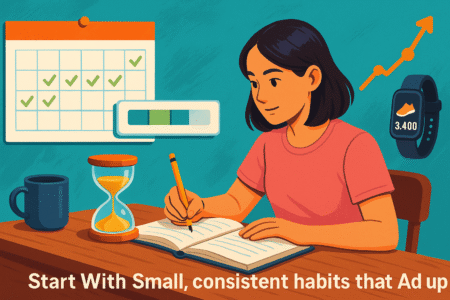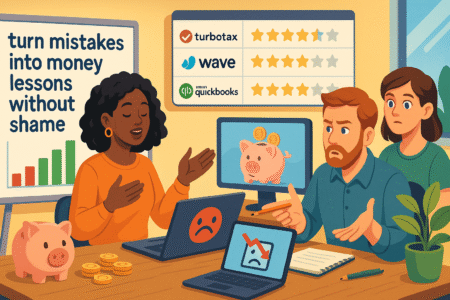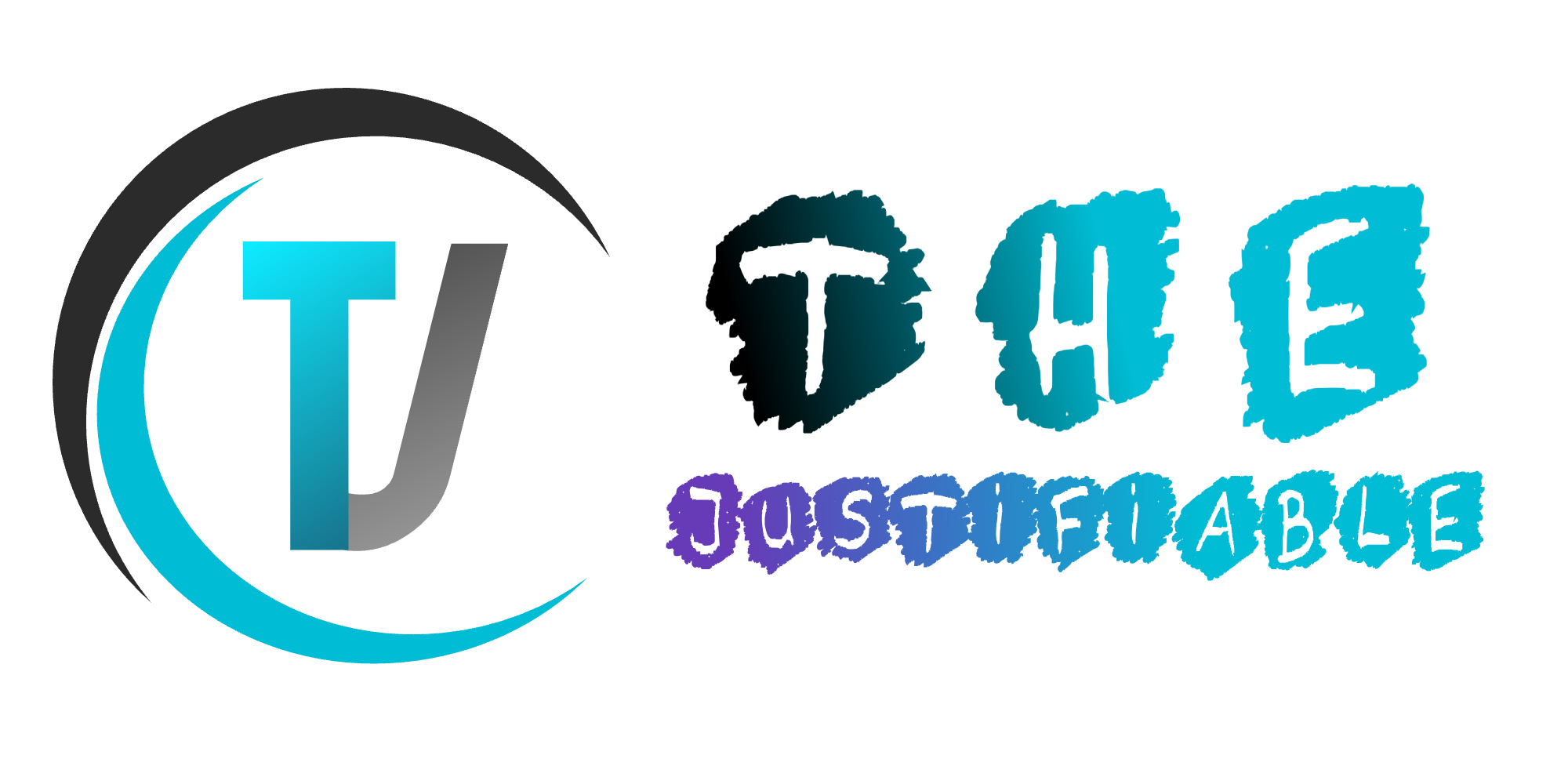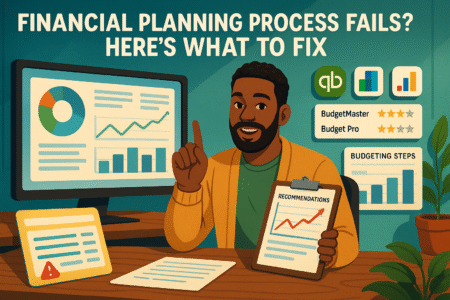Table of Contents
Want to build money but keep hitting a wall of confusion and overwhelm? You’re not alone. Between endless advice, flashy success stories, and contradicting strategies, it’s easy to feel stuck before you even start.
How do you pick the right path? What if you don’t have a lot to invest? And how do you stay motivated when progress feels slow?
This guide breaks it all down into doable steps that won’t leave you guessing. Whether you’re starting from zero or trying to make sense of a few scattered efforts, here’s how you can build money with clarity, confidence, and direction. Let’s make it simple—and real.
Clarify Your Money Goals So You Know Where You’re Headed
When you’re trying to build money, one of the biggest reasons you might feel lost is because you’re not aiming at anything specific. A clear goal gives your money a job—and your mind a sense of purpose.
Define What “Building Money” Means for You
This step sounds simple, but it’s often overlooked. Building money means different things to different people. For some, it’s creating a cushion of emergency savings. For others, it’s quitting their job through passive income.
Ask yourself:
- Are you trying to save a specific amount?
- Do you want to create new income streams?
- Is the goal financial security, freedom, or abundance?
Write it down in plain words, not financial jargon. For example: “I want to earn an extra $500/month from a side hustle by December,” is much more helpful than “I want financial independence.” The clearer the target, the easier it is to plan around.
Set Income and Saving Milestones That Motivate Action
Once you know what you’re aiming for, break it into short-term, mid-term, and long-term milestones. These help you track progress without feeling overwhelmed.
Here’s how I usually break them down:
- Short-term (0–3 months): Save $300 from weekly side gigs or reduce expenses by $100/month.
- Mid-term (3–12 months): Launch one income stream that generates $500/month.
- Long-term (12+ months): Build up $10,000 in a freedom fund or automate $200/month into investments.
You’re creating momentum, not perfection. Even hitting 70% of a goal can put you far ahead of where you started.
Use Vision Boards or Digital Planners to Track Progress
Visuals can turn abstract goals into something you can see and believe in. Whether it’s a corkboard with pinned savings goals or a digital app that shows your net worth growing—this kind of reinforcement works.
Tools like Trello or Notion let you create drag-and-drop goal boards, while Canva makes vision boards feel more like art than spreadsheets. Add inspiring quotes, specific dollar amounts, and progress check-ins. Seeing your goals visually can trigger the motivation to keep going, even when results are slow.
Pro Tip: People who visualize their goals daily are 1.4 times more likely to achieve them, according to a study from Dominican University of California.
Start With Small, Consistent Habits That Add Up

You don’t need a huge income or a master plan to build money. What you do need is consistency. Small, steady actions compound into big wins over time—especially when they’re easy enough to stick with.
Use the $5/Day Rule to Build Wealth Without Pressure
The $5/day method is a great mindset shift. Instead of obsessing over hundreds or thousands of dollars, you focus on finding, saving, or investing just five bucks each day.
Here’s how that adds up:
- $5/day = $150/month
- Invested monthly with an 8% return = ~$2,400 after 1 year, and ~$22,000 after 10 years
You could get there by:
- Skipping a daily delivery or coffee run
- Selling one small item per day on Facebook Marketplace
- Transferring $5 to a high-yield savings account every morning
It feels low-pressure, but over time it proves that progress is possible—even on a tight budget.
Automate Savings and Investments to Skip Decision Fatigue
One of the best ways to stay consistent is to take the decision-making out of your hands. Automation is like setting cruise control for your money.
You can:
- Use apps like Qapital to save micro-amounts based on your habits
- Set up recurring transfers every payday to savings or investment accounts
- Enroll in auto-investing platforms like Acorns or Fidelity Go, which round up purchases or handle portfolios for you
A study from The National Bureau of Economic Research found that automation can increase savings rates by over 80%. That’s not just convenience—that’s real progress without added stress.
Track Weekly Wins to Build Positive Financial Momentum
When it comes to habits, seeing the payoff is crucial. Every week, spend five minutes reviewing your money wins, no matter how small.
Create a running list in your phone or journal. Examples might include:
- “Saved $20 on groceries using coupons.”
- “Sent $50 to emergency fund.”
- “Published one affiliate blog post.”
Celebrating micro-wins rewires your brain to associate money growth with success—not anxiety. Over time, that builds the emotional resilience needed to keep going, especially when progress slows down.
Here’s a simple chart to help you visualize how small habits can stack up:
| Habit | Weekly Result | Monthly Impact | Annual Gain |
| Save $5/day | $35 | $150 | ~$1,825 |
| Sell 1 item/week | $25 | $100 | ~$1,200 |
| Auto-invest $10/week | $40 | $160 | ~$2,000+ w/ growth |
| Cut 1 subscription/month | — | $10–$30 | ~$120–$360 |
Bottom line: When you remove pressure and track progress intentionally, money-building stops being confusing and becomes empowering. Keep it small. Keep it steady. Let those habits work in the background while you live your life.
Cut Out the Noise and Choose One Income Path First
Trying to build money while juggling five different ideas usually leads to burnout, not results. The key is to silence the noise, focus on one realistic income path, and follow it long enough to see progress.
Compare Passive vs. Active Income Options
Both passive and active income have their place, but each comes with different expectations. Choosing between them depends on your time, skills, and how quickly you need results.
Passive income usually requires upfront time or money. Think of:
- Creating an ebook or online course
- Building a blog with affiliate marketing
- Investing in dividend stocks or real estate
Active income trades time for immediate cash. These include:
- Freelance writing, design, or consulting
- Reselling items on eBay or Mercari
- Driving for Uber or delivering with DoorDash
Here’s a quick side-by-side to clarify:
| Income Type | Initial Effort | Long-Term Potential | Speed of Return |
| Passive | High | Very High | Slow |
| Active | Medium | Moderate | Fast |
If you need cash in 30 days, active income is the safer bet. But if you’re willing to play the long game, passive income can free you from trading time for money.
Pick a Simple Starter Path: Freelancing, Reselling, or Affiliate
Instead of bouncing between too many ideas, commit to one entry-level income stream. Choose based on your current lifestyle, time, and skills.
Here are three beginner-friendly paths:
- Freelancing: Offer services like writing, editing, or social media on platforms like Upwork or Fiverr. You only need one paying client to prove it works.
- Reselling: Flip used items on Facebook Marketplace or Poshmark. Start with unused stuff from your home to test demand.
- Affiliate marketing: Create short reviews or content using platforms like Medium, YouTube, or your own blog. Promote products through affiliate networks like Awin or Flexoffers.
Each one can earn a few hundred dollars/month within the first few weeks, without needing major tools or upfront investments.
Follow One Strategy for 30 Days Before Expanding
Here’s where most people slip: they try a bit of everything, get scattered results, and assume nothing works. Instead, treat your chosen income stream like a 30-day experiment.
In those 30 days:
- Set one measurable goal (e.g., land 2 freelance gigs, sell 5 items)
- Block out specific time in your calendar
- Track wins, challenges, and lessons in a single notebook or app
Even if you don’t hit your goal, you’ll learn way more from going deep than from chasing everything. This clarity is what helps you actually build money without second-guessing every move.
Case Insight: One Reddit user documented a 30-day freelance challenge where they earned $527 in their first month—just from Fiverr gigs and referrals. They stuck to only writing and improved their pitch each week. The secret wasn’t in their skill, but their focus.
Create a Simple Budget That Feels Empowering, Not Restrictive
Budgeting isn’t about giving things up—it’s about giving your money purpose. A good budget doesn’t limit you, it helps you use money in a way that actually feels good and sustainable.
Use the 50/30/20 Rule Without Overthinking It
The 50/30/20 rule is one of the easiest budgeting methods to follow, even if you’re not a numbers person. It breaks your income into three simple categories:
- 50% Needs: Rent, food, transportation, bills
- 30% Wants: Dining out, subscriptions, hobbies
- 20% Savings/Debt: Emergency fund, retirement, debt repayment
Let’s say you make $2,500/month:
- $1,250 for needs
- $750 for wants
- $500 for savings or debt
If your numbers don’t fit exactly, don’t stress. The point isn’t perfection—it’s awareness. Just knowing where your money’s going can help you shift it more intentionally.
Track Spending in Just 10 Minutes a Week
You don’t need to track every penny daily. Instead, pick one day a week—maybe Sunday morning or Friday evening—and do a 10-minute review.
Use tools like:
- Tiller (Google Sheets automation for budgeting)
- YNAB (You Need A Budget, great for goal-focused planning)
- Goodbudget (based on envelope budgeting)
Or go analog. Just list your weekly expenses in a notebook, tally them by category, and ask: “Did I spend in line with what matters to me?”
This routine builds confidence over time, and you’ll start seeing patterns that help you make smarter decisions without major effort.
Build in “Fun Money” So Budgeting Doesn’t Feel Like Punishment
Here’s where most people mess up: they make budgets so tight that they’re impossible to follow. Instead of guilt-tripping yourself, plan for joy.
Create a small “fun fund” in your budget:
- $20 for a weekly coffee shop visit
- $50/month to spend guilt-free
- $10 every week to try something new
Giving yourself permission to enjoy life—within reason—makes you more likely to stick to your overall financial plan. This one tweak often makes the difference between someone who quits budgeting after two weeks and someone who makes it a lifestyle.
Expert Insight: According to a CNBC Make It feature, people who assign even just 5–10% of their income to flexible spending report greater long-term budgeting success and lower financial stress.
Quick Budget Check-In Template:
| Category | Budgeted | Actual | Notes |
| Needs | $1,250 | $1,280 | $30 over on groceries |
| Wants | $750 | $710 | Skipped one takeout |
| Savings/Debt | $500 | $520 | Auto-transfer worked! |
Keep it simple, flexible, and honest. That’s the foundation for a budget that sticks and supports your journey to build money on your own terms.
Use Tools That Simplify Building Money, Not Complicate It

When you’re learning how to build money, it’s easy to get overwhelmed by tools that promise more than they deliver. The trick is to choose tools that take the pressure off—not add more tasks to your plate.
Apps That Help You Save Automatically (e.g., Qapital, Digit)
If saving feels like a struggle, automation can remove the friction. Apps like Qapital and Digit are built to move small amounts of money without you even noticing.
- Qapital rounds up your purchases and transfers the difference into your savings goals. You can also set up creative rules, like saving every time you hit 5,000 steps.
- Digit analyzes your income and spending, then moves money into savings when you can afford it—no fixed amounts needed.
For someone who struggles to stay consistent, these tools make saving feel invisible but still effective. Users of Digit have reported saving over $2,000 in their first year with zero manual effort.
Visual Budgeting Tools (e.g., YNAB, Goodbudget)
Sometimes a spreadsheet just doesn’t cut it. If you want your money plan to make sense at a glance, go visual. Budgeting apps like YNAB (You Need A Budget) and Goodbudget help you see exactly where your money is going—and how to shift it if things change.
- YNAB is ideal if you want to plan every dollar ahead of time and link your real-time spending.
- Goodbudget uses a digital envelope system where you allocate money to categories and stick to those limits.
Both tools offer mobile apps, letting you track expenses while you’re on the go. According to YNAB, new users save $600 on average in their first two months. That’s not just budgeting—it’s measurable progress.
No-Stress Investing Platforms (e.g., Acorns, Fidelity Go)
Investing can feel intimidating, but platforms like Acorns and Fidelity Go are built for beginners. They don’t require a background in finance or hours of research.
- Acorns automatically invests your spare change into a diversified portfolio. It’s hands-off, and the portfolios are built based on your goals.
- Fidelity Go offers robo-advised portfolios with no advisory fees for balances under $25,000, giving you room to grow without pressure.
If you’re serious about building long-term wealth without obsessing over market trends, these platforms help you start small and stay consistent.
Here’s a quick breakdown to compare the tools:
| Tool Type | App Name | Best For | Key Feature |
| Auto Saving | Digit | People who forget to save | AI-based savings transfers |
| Visual Budgeting | YNAB | Goal-oriented budgeters | Real-time tracking |
| Passive Investing | Acorns | Beginners in investing | Round-ups + ETF portfolios |
These tools aren’t meant to fix everything, but they make it easier to stick to your plan. Use them to create structure, not stress.
Build Income Through Skills You Already Have
You don’t need a new degree or fancy certification to start making money. Chances are, you already have marketable skills—you just haven’t packaged them yet.
List 3 Skills You Can Monetize Right Now
Look at your current job, hobbies, or even things friends ask you for help with. Ask yourself:
- What do people thank me for?
- What comes naturally to me that others find hard?
- What have I taught someone else, even informally?
Here are three examples many people overlook:
- Writing or editing: If you’re good at making words flow, businesses and content creators need your help.
- Design or crafting: Handmade products, social media graphics, or templates can be sold on Etsy or Gumroad.
- Teaching or explaining: Whether it’s music, math, or how to use Excel, you can turn this into courses, tutoring, or coaching.
The goal is to start where you are, not where you wish you were.
Use Platforms Like Upwork, Etsy, or Teachable to Get Started
You don’t have to build an audience from scratch. Use platforms that already have traffic:
- Upwork: Ideal for writers, marketers, and developers who want freelance gigs.
- Etsy: Great for crafters, designers, or anyone who can create digital products.
- Teachable: Perfect if you want to turn your knowledge into a course, even if you’re starting small.
Each of these platforms comes with built-in credibility and payment systems. You focus on delivering value—they handle the tech.
Package Skills Into Offers: Freelance Gigs, Digital Products, or Services
Once you identify your skill, the next step is to turn it into something people can buy. Think in terms of outcomes:
- Freelance service: “I’ll write your blog post for $100.”
- Digital product: “Here’s my Notion template for productivity.”
- Online course or workshop: “Learn basic photography in 7 days.”
Make the offer clear, results-driven, and priced for what your audience values—not just what your time is worth. You can refine as you go, but launching messy is better than waiting for perfect.
Expert insight: A 2023 Payoneer report showed that beginner freelancers earn an average of $21/hour, and many scale to full-time income within six months. Your skills are more valuable than you think.
Avoid Comparison Traps That Kill Confidence
One of the biggest barriers when trying to build money is the mental spiral of comparison. You scroll through highlight reels and start feeling like you’re behind before you even begin.
Why Social Media Skews Your View of “Success”
What people post online is rarely the whole picture. You’re seeing filtered wins, not the long, messy process behind them. That 6-figure earner probably spent five years building something invisible.
Here’s what makes it worse:
- People only post their best months.
- You’re comparing your beginning to their middle.
- Algorithms show you the extremes, not the average.
Recognizing this helps you stop internalizing someone else’s pace as your failure.
Replace Comparison With Curated Learning Sources
Instead of endlessly scrolling, fill your feed or inbox with people and resources that actually teach you something. Choose a few creators who share both wins and setbacks, and follow them with intention.
Here’s where to look:
- Newsletters: Try Stacked Marketer (for digital marketing) or The Financial Diet (for real money advice).
- Podcasts: Listen to shows like Smart Passive Income or Side Hustle School.
- YouTube channels: Seek creators who explain their process, not just their results.
Curate your inputs, and you’ll build knowledge instead of insecurity.
Build a “Money Wins” Journal to Stay Focused on Your Path
When progress is slow or invisible, your brain will default to doubt. That’s why I recommend keeping a simple “money wins” journal—digital or physical.
Each week, write down 1–3 things that went right. It could be:
- “Saved $50 from not eating out.”
- “Posted my first product on Etsy.”
- “Got my first blog visitor from Google.”
These wins build real confidence. They remind you that you’re making progress, even if it’s not flashy. And when you look back after a few months, you’ll have proof that you’re not stuck—you’re building something solid.
Pro tip: Stanford researchers found that progress-focused reflection boosts motivation and performance more than goal-setting alone. In short, tracking your wins matters more than obsessing over the finish line.
The journey to build money doesn’t have to be lonely or confusing. When you mute the noise and focus on your own growth, you’re not just building income—you’re building belief.
Get Support So You’re Not Building Alone
Trying to build money in isolation can feel overwhelming and discouraging. Having people to learn with, vent to, or stay accountable to makes a huge difference when motivation dips or setbacks hit.
Find Online Communities or Subreddits Focused on Money Growth
The internet is full of helpful, encouraging spaces where people share real progress—not just polished success stories. Whether you’re into budgeting, side hustles, or investing, there’s likely a community for it.
Some of the most active and beginner-friendly communities include:
- r/personalfinance: Offers advice on saving, debt, budgeting, and credit.
- r/financialindependence: Focuses on long-term wealth and freedom strategies.
- r/sidehustle: Filled with actionable income ideas and honest wins/fails.
These forums give you a way to ask questions anonymously, share your goals, or get support from people who’ve already been where you are.
Join Accountability Groups for Weekly Check-Ins
If you find it hard to stay consistent, accountability might be your missing piece. Having others check in with you regularly creates momentum and helps you follow through.
You can:
- Start a free mastermind with friends who have similar financial goals
- Join Discord servers or Slack groups built around money growth
- Use apps like Focusmate for virtual coworking and goal tracking
One user shared that after joining a budgeting Discord, they paid off $6,000 of debt in six months—just by posting weekly updates and getting feedback.
Use Podcasts, Books, and Newsletters to Stay Inspired
If you’re not ready to connect with others directly, start with content that keeps your mindset in check. The right voices in your ear or inbox can reshape how you think about money.
Here are a few worth checking out:
- Podcast: ChooseFI – covers simple financial independence strategies with real-life stories.
- Newsletter: I Will Teach You To Be Rich by Ramit Sethi – practical, no-shame advice about earning, saving, and spending with confidence.
- Book: The Psychology of Money by Morgan Housel – explores why we do what we do with money, even when we know better.
Choose voices that feel honest and grounded—not flashy or salesy. That kind of guidance will help you stay motivated without feeling pressured.
Turn Mistakes Into Money Lessons Without Shame

Mistakes are a part of the process when you’re learning to build money. What matters more than avoiding them is learning how to handle them without spiraling into guilt or frustration.
Track Mistakes Like Data, Not Drama
Instead of thinking “I messed up again,” try reframing mistakes as information. When you overspend or miss a goal, ask:
- What triggered the decision?
- Was it avoidable or just a learning curve?
- What will I try next time?
Treating mistakes like data points helps you spot patterns, not flaws. This mindset keeps your confidence intact—even when your finances wobble.
Set a “Lesson Learned” Rule for Every Financial Misstep
Create a personal rule: every time you make a financial mistake, write down at least one takeaway. This makes errors feel useful instead of defeating.
For example:
- “Impulse-bought $80 of stuff during a bad day. Next time: use a 24-hour delay before purchasing anything over $20.”
- “Didn’t track expenses for two weeks, now I’m confused. Set a weekly 10-minute money check-in going forward.”
This reflection turns setbacks into progress—because you’re constantly evolving your system instead of abandoning it.
Rebuild Quickly With a 24-Hour Reset Plan
A small mistake doesn’t have to derail your entire plan. When something goes off course, give yourself one day to reset and realign.
Here’s a simple 24-hour reset checklist:
- Review where you slipped (with no self-blame)
- Make one small corrective move (like canceling a subscription or transferring $10 to savings)
- Revisit your main goal and why it matters to you
This quick recovery routine helps you avoid the “all or nothing” trap. From what I’ve seen, people who build money successfully don’t avoid mistakes—they just bounce back faster.
Case Insight: A 2022 study in the Journal of Behavioral Finance found that those who reflect on financial errors constructively are more likely to adopt new strategies and increase their savings within six months.
Stick With It by Building a Ritual Around Money Growth
Momentum fades if you don’t anchor your progress in something repeatable. By turning money habits into a ritual, you make success less about motivation and more about rhythm.
Set Weekly “Money Dates” to Check In
Money dates aren’t just for couples. Setting a regular time to review your numbers helps you stay grounded and in control. This could be:
- Every Sunday morning over coffee
- Every Friday night with your favorite playlist
- The first Monday of each month with a simple dashboard
During this time, check your budget, savings goals, income streams, and anything else that needs a pulse check. It doesn’t need to be fancy—just consistent.
Reward Milestones With Non-Money Treats
You don’t need to splurge every time you hit a goal. Instead, build in meaningful rewards that fuel your motivation without harming your progress.
Ideas include:
- A day off work to celebrate finishing a big money goal
- An unplugged weekend or nature hike
- A creative project you’ve been wanting to start
Rewards don’t need a price tag—they just need to remind you that effort is worth celebrating.
Keep a Personal Tracker of Passive Income Growth Over Time
Seeing your passive income grow—no matter how slowly—is one of the best motivators to keep going. Whether you earn from affiliate links, digital products, or investments, tracking it builds belief.
You can use:
- A spreadsheet with monthly totals
- A Notion board with screenshots or payouts
- A wall calendar to mark your “income days”
Even small earnings matter. Watching your first $3 grow to $30, then $300, reminds you that momentum is real.
Expert Tip: A study from the Harvard Business Review showed that people who visually track their progress toward a goal are 76% more likely to stick with it over 12 months. The key is visibility—and consistency.
Whether you’re starting small or regaining your rhythm, rituals help turn effort into a habit. And in the long run, that’s how real wealth is built. One check-in, one reward, one new dollar at a time.






